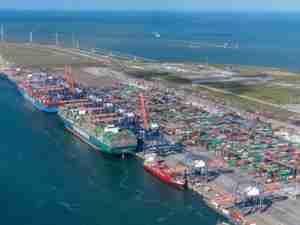“The improved performance of some of our key cargos at the Port of Baltimore’s public terminals is a positive sign as we continue to bounce back from the worst economic period since the Great Depression,” said Governor O’Malley. “2009 was a very tough year for the maritime industry but the Port of Baltimore has been able to maintain a solid position, in part, because of the long term contracts that are in place to help generate and maintain thousands of good, working-class jobs that benefit Maryland families.”
Comparing the first six months of 2010 with the same time period in 2009, general cargo tonnage was up eight percent. General cargo is defined as containers, autos, forest products, roll on/roll off cargo (farm and construction equipment), and steel.

Latest Port Rankings
Despite a decline in tonnage, Baltimore was able to maintain market share for most of its key commodities in 2009. The Port remains number one among U.S. ports for handling imported roll on/roll off, imported forest products, imported sugar, and imported gypsum. The Port is ranked second for exported autos and imported iron ore. Baltimore is ranked third nationally for imported autos, imported aluminum, and exported coal.










